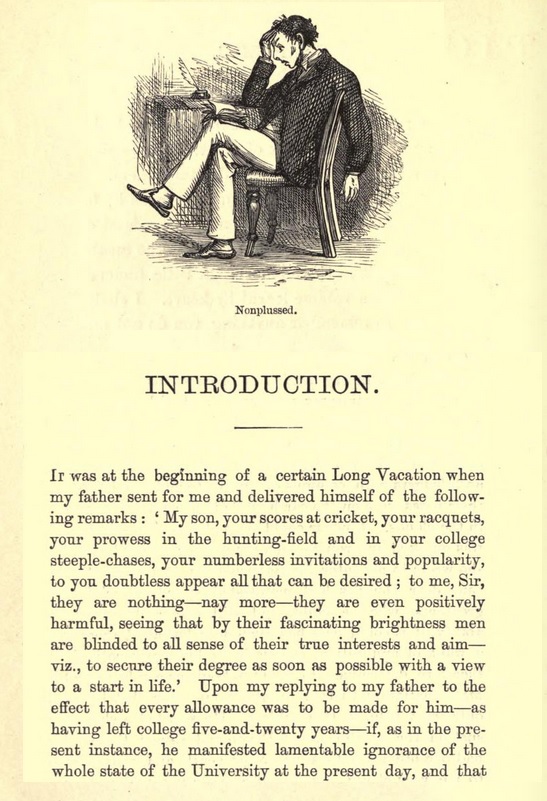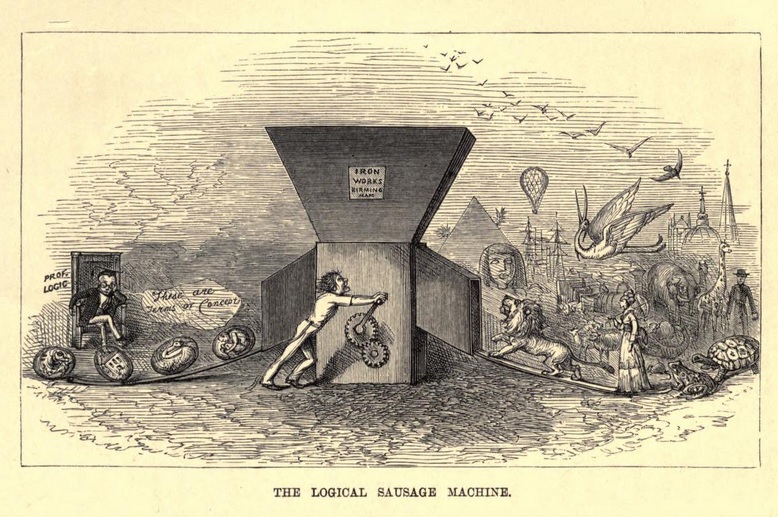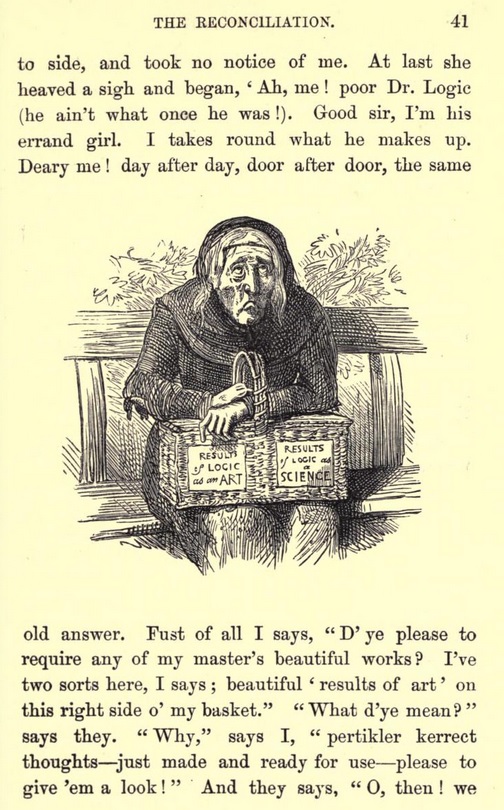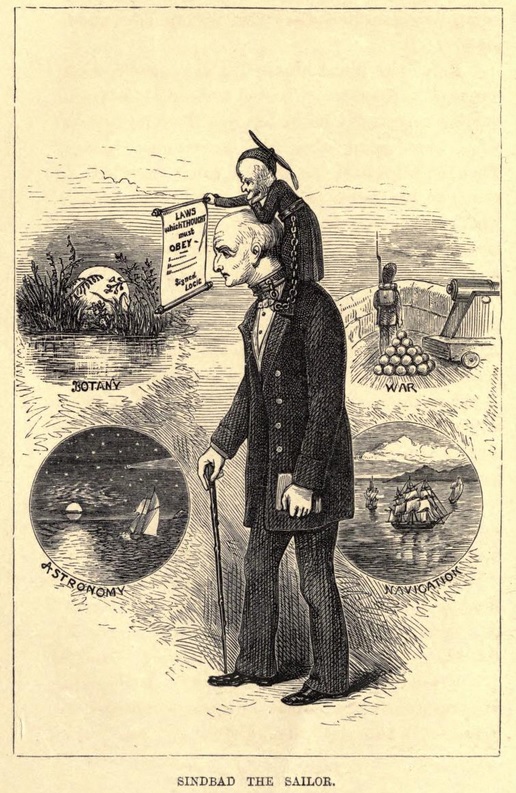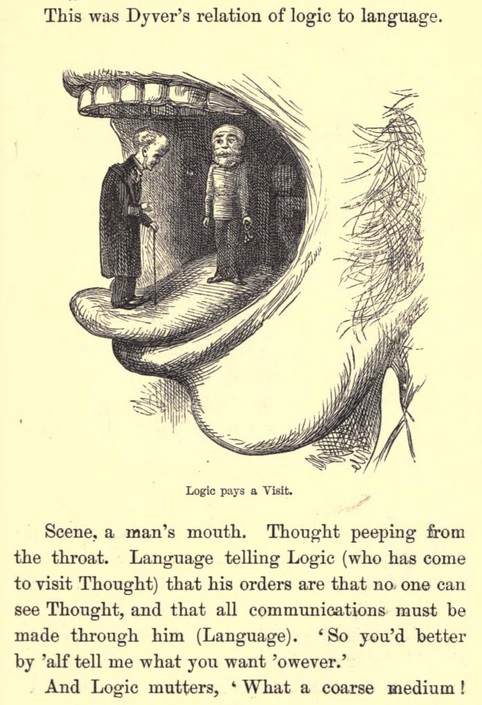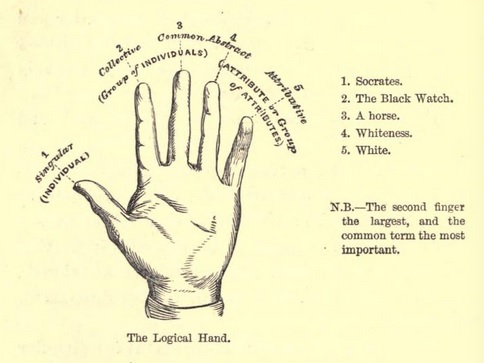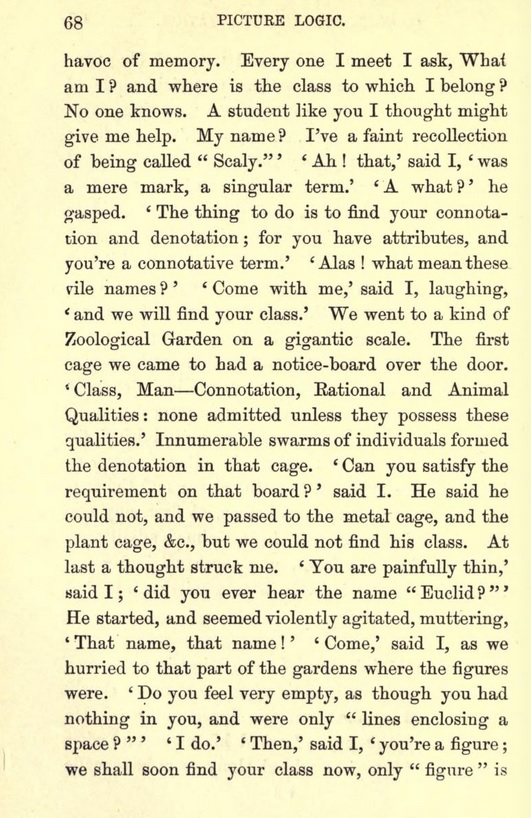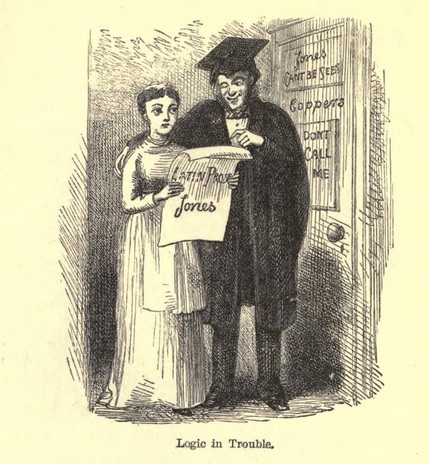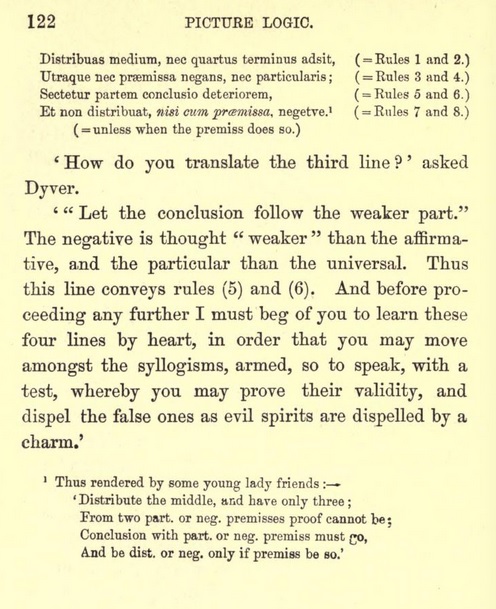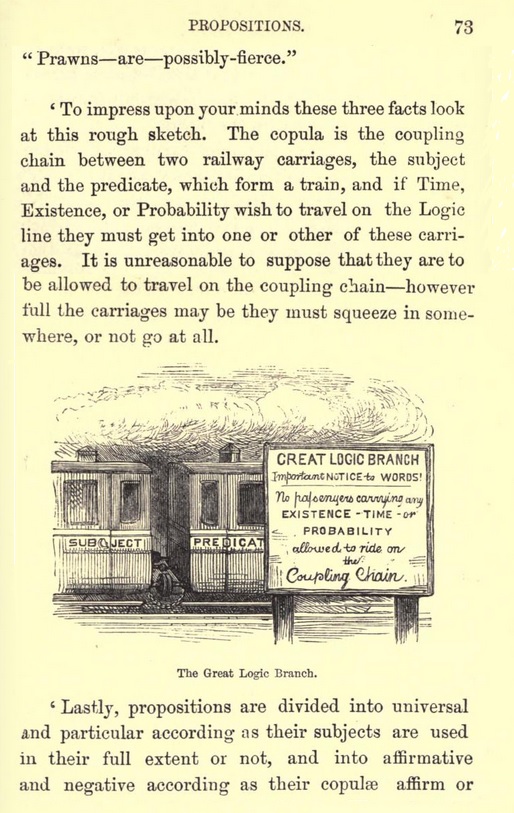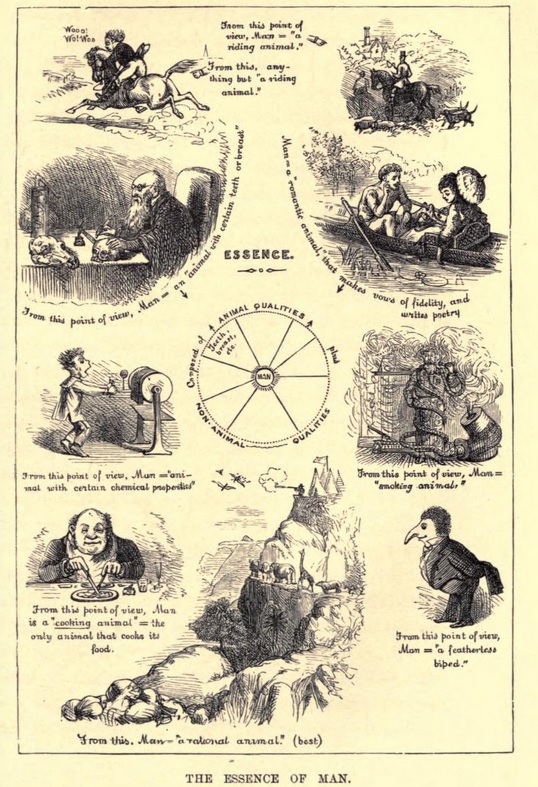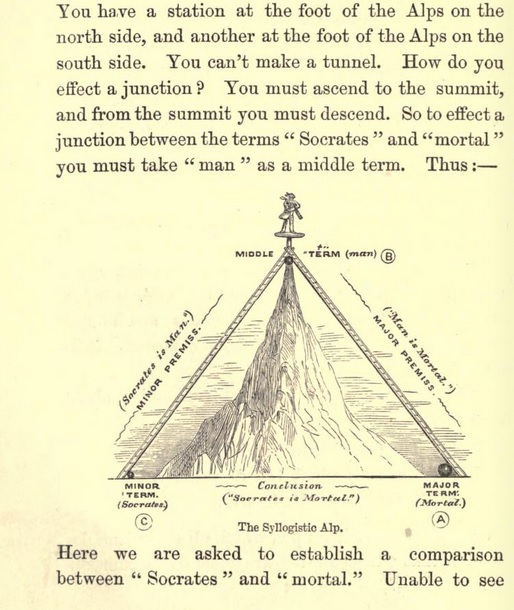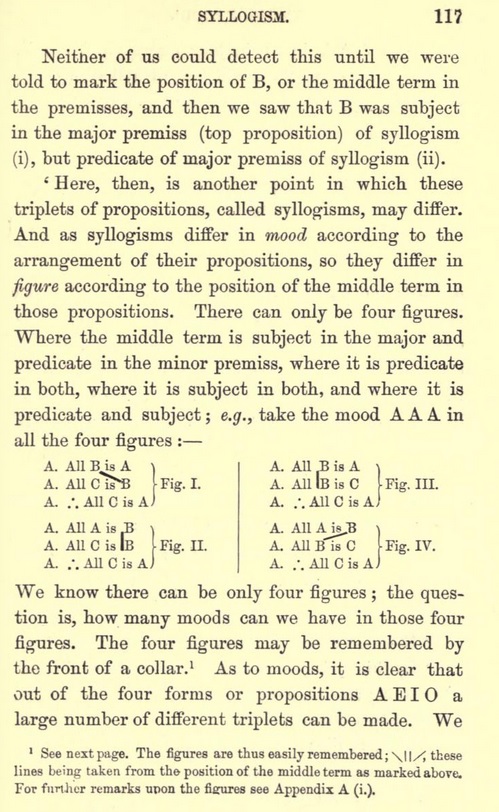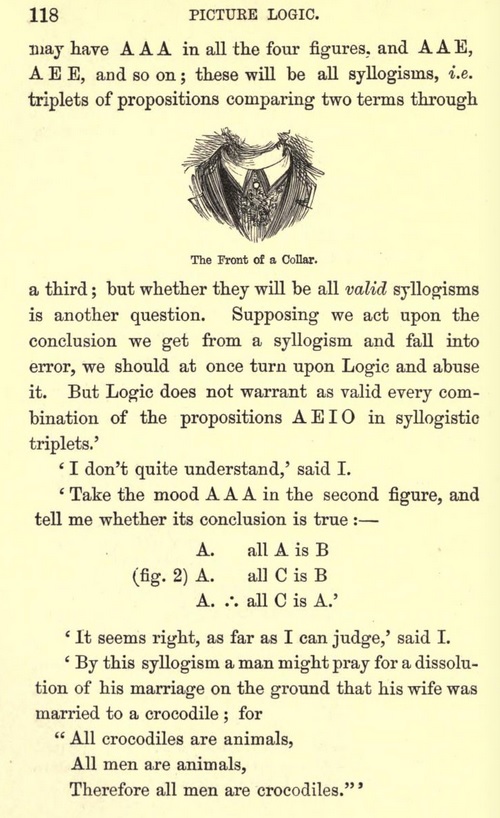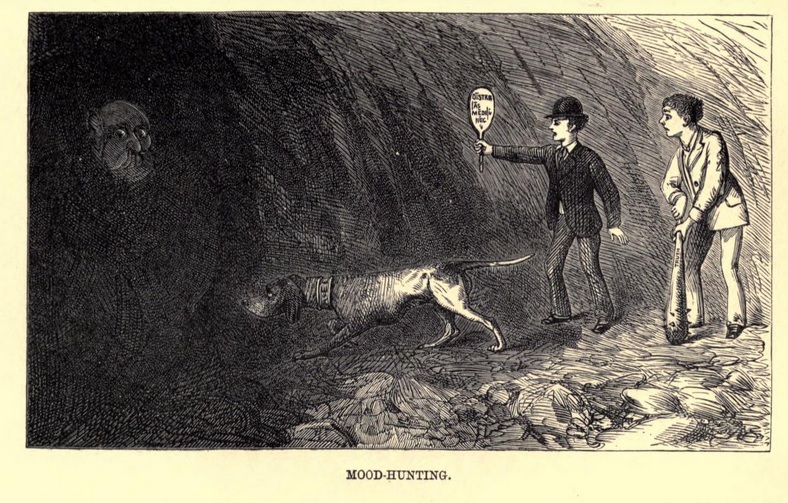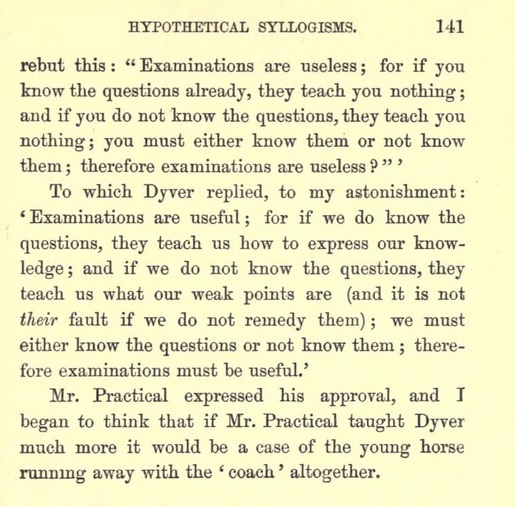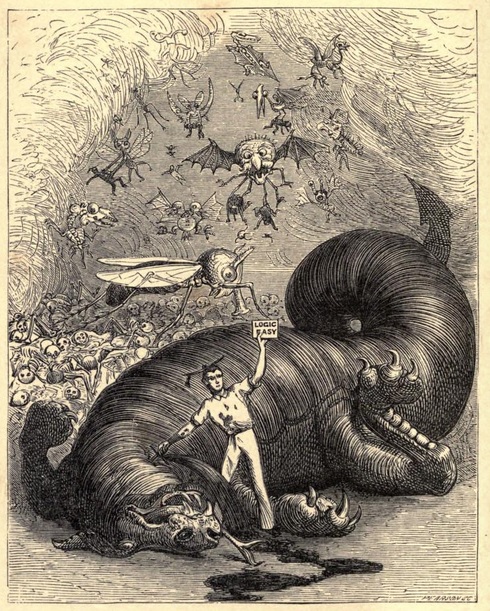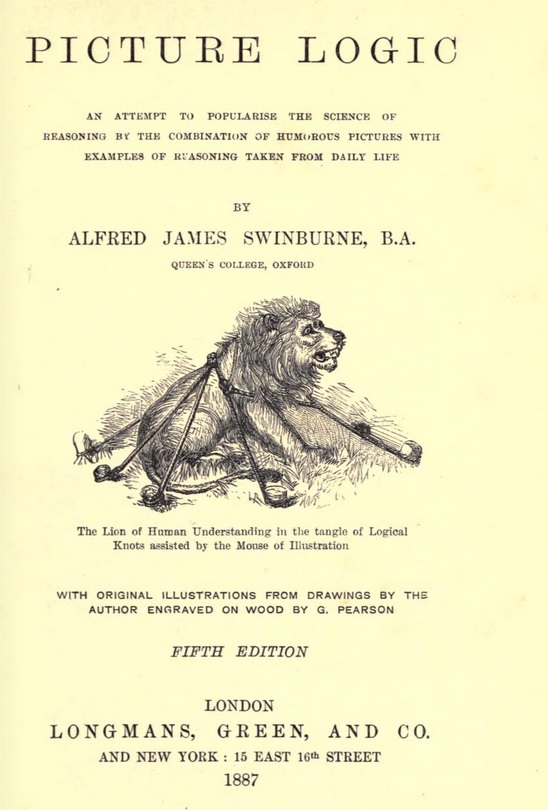

"Next morning Mr. Practical assumed a grave look and began : There is no lack of treatises on Logic, but there is a lack of people who understand them. It is the custom of Passmen to attempt to learn by heart a great deal of matter they do not in the least comprehend, without attempting to realise the meaning, and so fixing it in the memory. A little understood is better than a volume learnt by heart. I shall not expect you to remember anything you do not understand ; nor shall I ever make use of instances other than those of everyday life ; and if my illustrations be too familiar to appear scientific, my excuse will be that I wish to bring home to you what I say, that you may realise and appreciate and so remember its meaning, as a man who has swum two miles, or been ill eight hours on a boat, has no difficulty in remembering the force of the expressions long swim or unpleasant cruise. The neat and concise phrases you meet with in your treatises on Logic are deceptive ; like the ease of a good skater or runner, they are the results of hard work, and you might as well expect to get that ease at once without practice, as imagine that by learning off those phrases you have mastered Logic. Therefore, pass over all words and instances that you do not understand as you read your treatises side by side with my attempts at explanation."
So begins Alfred James Swinburne's Picture Logic.
"Innovative" pædagogy is rarely innovative; higher education in some form has existed for thousands of years, and almost everything has been tried. Even during the Nineteenth Century, when most textbooks featured self-consciously dry prose set in long columns of grey type unbroken by graphics, there were outliers using techniques associated with other eras. Formal logic especially seemed to inspire such deviations. Lewis Carroll is the best-known of the logician-humourists, but his writings conveyed original ideas rather than the standard curriculum. By contrast, Picture Logic was entirely conventional in content, aimed at the student market. (This does not imply, however, that it was not up-to-date; logic was a fast-evolving field in the 1800s, and Swinburne's text covers such recent developments as the Venn diagram.) The constant use of visuals and jokes makes Picture Logic fit well with Twenty-first Century educational practice, and indeed (if one can tolerate some regretable sexist and imperialist passages, and if one has a Nineteenth Century schoolboy's knowledge of Latin and Greek) one might be hard-pressed to find a better introduction to classical logic.
Strange to say, however, this "modernity" is actually a throwback. Any European student of philosophy from Aristotle's time until about 1700 would have recognised this book as an application of the famous Art of Memory by which pre-Modern thinkers organised their experience. Swinburne's Mr. Practical attacks rote memorisation, but his teaching consists largely of elaborate, joky mnemonics. The idea is apparently that the mnemonics will only work if the ideas they represent are fully understood.
Here are a few excerpts:
